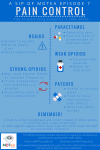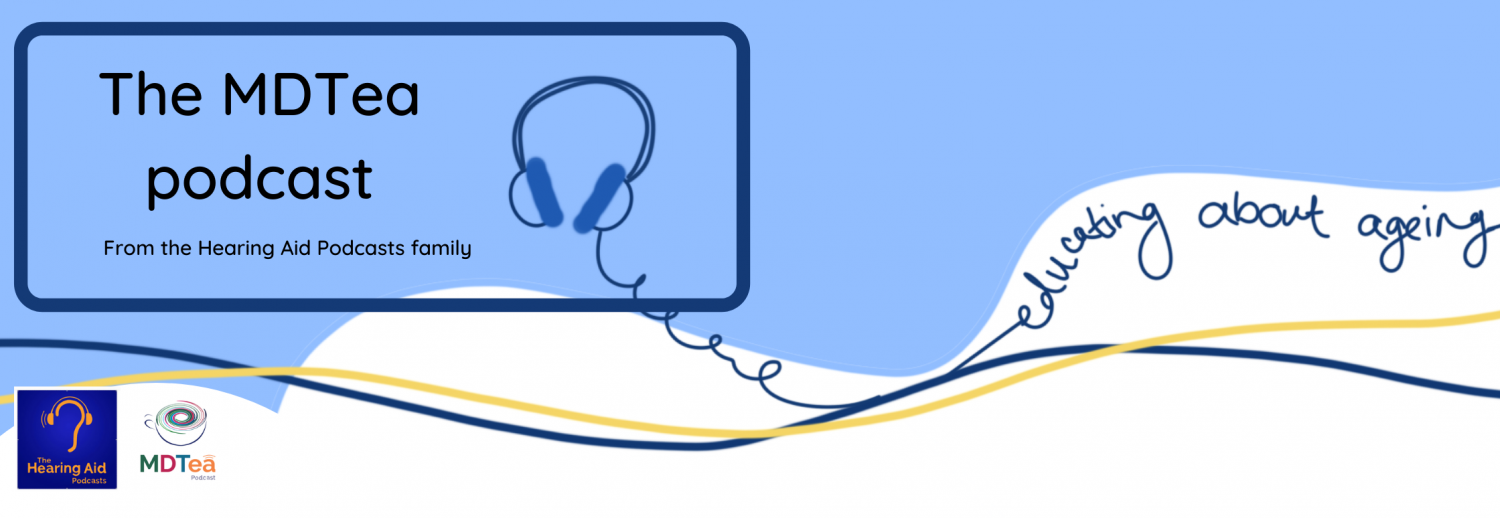Episode 1.7 Pain Management In Older People
MDTea Episode 7: Pain Management in Older People
Posted 12th April 2016
Presented by: Jo Preston & Iain Wilkinson, Geriatricians at Surrey and Sussex Healthcare NHS Trust.
Core Faculty Contributors: Adam Buckler – Pharmacist, Sarah Jane Ryan – Physiotherapist, Lucy Frost – Dementia Nurse specialist
In this episode we talk through some of the principles of pain management with a focus on the how analgesia works and some top tips / facts about the most commonly used in our practice.
Here is this week’s Sip of MDTea summarising the principles of pain management in older people.

You can download the show notes here
CPD log
Click here to log your CPD online and receive a copy by email.
Episode 7 Show Notes
Pain Management
___
Presented by: Dr Jo Preston & Dr Iain Wilkinson
Faculty:
Adam Buckler – Pharmacist
Sarah Jane Ryan – Physiotherapist
Broadcast Date: 12th April 2016
Learning Outcomes
Knowledge:
- To be able to describe the different types of pain and how pain is felt
- To understand that pain response has an emotional component
- To understand of the methods of action of the common analgesics
Skills:
- To know when to use different tools for assessing pain (i.e Abbey)
- To assess for signs of pain during routine care or assessment.
Attitudes:
- To appreciate your own role in pain assessment and management
- To consider pain as a cause of agitation in those with cognitive impairment
Definitions:
Formal / Scientific Definition:
Pain is an unpleasant sensory and emotional experience associated with actual or potential tissue damage, or described in terms of such damage and pain is always a subjective experience.
Pain definition From International Association for the Study of Pain (IASP)
Practical Definition:
Pain does not necessarily have to be associated with an acute / sudden injury as the word often conjures up. In older people it’s especially important to think of pain in the chronic situation also. Arthritis for example causes tissue damage but not a sudden new pain – the damage is long term and the pain may develop over the longer time period also.
Key Points from Discussion
Think about the cause of the pain and not just managing it
Pain in older people (especially those with cognitive impairment) often goes underreported and under managed.
Pain is a sensation sensed by nerve fibers. There are two type of these faster ones and slower ones. Importantly pain fibers can be stimulated by mechanical stimuli (such as heat or pressure) or chemical stimuli (such as those released when there is cell damage). The balance between these two will determine the way the pain feels – but again it’s subjective so your feeling may be different to mine.
The pain signals are then sent up to the thalamus in the brain via the dorsal root column in the spinal cord. In the brain where the emotional response to the pain is made.
Example:. burning your finger – you pull it away before you think about it – that’s the pain reflex response and has no central involvement, but then later you remember it is hot and don’t do that again – that is a higher cortical / learning response to pain).
Pain can be modulated in a number of ways:
- Gate theory – mixing the alpha and C signals – ie. rubbing reduces the signals going up the spine.
- Endogenous opioids (released in exercise)
- Signals coming down from the brain
This episode focuses on pain killing medication (analgesia) but there are other ways of managing pain – using the three modulation strategies above (eg. TENS machine, hot / cold therapy, pain management CBT etc).
Here is a really good review of pain and how we feel pain
Types of Pain
Pain can be formed by a number of different mechanisms – we talk though the ones we feel are important:
1) Inflammation of the nerves, e.g., temporal neuritis.
2) Injury to the nerves and nerve endings with scar formation, e.g., surgical damage or disk prolapse.
3) Nerve pain eg or peripheral neuropathy invasion by cancer, e.g., brachial plexopathy.
4) Injury to the structures in the spinal cord, thalamus, or cortical areas that process pain information, which can lead to intractable pain; deafferentation, e.g., spinal trauma.
5) Abnormal activity in the nerve circuits that is perceived as pain, e.g., phantom pain with cortical reorganization.
6) Psychological – links into the emotional responses we have to pain – may make it harder to treat
See this 2016 article on characterising pain qualities in older adults
Medications
We recommend working your way up the well know WHO analgesic ladder
Paracetamol
Generally safe – 4 x day dosing.
Lower dose in patients’ whose weight is <50kg
- Paracetamol does not suppress the severe inflammation of rheumatoid arthritis and acute gout but does inhibit the lesser inflammation resulting from extraction of teeth and is also active in a variety of inflammatory tests in experimental animals.
- Paracetamol, NSAIDs and selective COX-2 inhibitors all have central and peripheral effects. As is the case with the NSAIDs, including the selective COX-2 inhibitors, the analgesic effects of paracetamol are reduced by inhibitors of many endogenous neurotransmitter systems including serotonergic, opioid and cannabinoid systems.
Paracetamol Pharmacology article
NSAIDs- Non-steroidal anti-inflammatory drugs
Generally best to avoid these in older people – have side effects – GI upset (including bleeding), may worsen asthma and can cause renal failure.
But…they have a valuable anti-inflammatory effect.
Ibuprofen Pharmacology article
Weak Opioids
Codeine and Dihydrocodeine
Both are pro-drugs and split down into a number of active metabolites
Have opioid side effects (See below)
Strong Opioids
Morphine
- Morphine acts on Mu receptors produce analgesia by actions at several levels of the nervous system, in particular, inhibition of neurotransmitter release from the primary afferent terminals in the spinal cord and activation of descending inhibitory controls in the midbrain.
- Side effects:
- Constipation, confusion, addiction, respiratory depression, sedation, rash – histamine release – not an allergy!, nausea.
- People may build tolerance to the opiates over time
- Some side effects may reduce as tolerance develops.
Buprenorphine – available as a patch – is a partial agonist / antagonist or opioid receptors
Fentanyl – also available as a patch – very strong so doses very small
Oxycodone – may be safer in renal failure
Tramadol – a synthetic opiate – has lots of side effects as it acts on many types of receptors.
There are a number of means of assessing the subjective feeling that is pain.
Common means are the:
1-5 or 1-10 Likert style scale
Faces with differing expressions for pain levels
Visual analogue scale (a line where you make a mark as to how bad the pain is)
In Dementia there are a number of pain scales (eg. Abbey) – these are described in the article below.
Pain assessment scales in dementia
Curriculum Mapping:
This episode covers the following areas (n.b not all areas are covered in detail in this single episode):
| Curriculum | Area |
| NHS Knowledge Skills Framework | Suitable to support staff at the following levels:
|
| Foundation Curriculum 2012 | 7.5 Safe Prescribing
8.4 Manages pain |
| Foundation Curriculum 2016 | 10. The frail patient
13. Prescribes safely
|
| Core Medical Training | Common Competencies:
Symptom based competencies:
System based competencies
|
| GPVTS program | Section 3.05 – Managing older adults
Section 3.20 – Care of people with musculoskeletal problems
|
| ANP (Draws from KSF) | 7.12 Acute pain
7.25 Chronic pain 13. Therapeutics and safe prescribing |





1 Response
[…] Episode 1.7 Pain Management In Older People […]